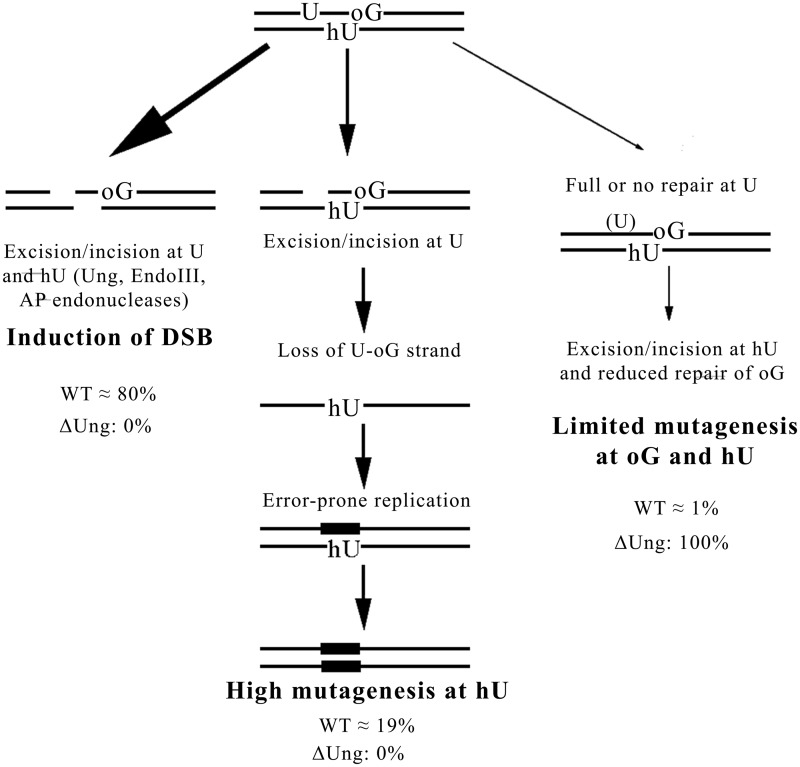Figure 6.
The model proposed for processing of MDS composed by two oxidized bases and U. We propose that U-oG/hU MDS are processed by three pathways. A major pathway (∼80%) converts MDS into DSB in WT cells owing to the excision/incision at U and hU by Ung, EndoIII (Nth), AP endonucleases, whereas it does not occur in Δung cells. This was determined from the fraction of viable colonies (∼20%) after transformation with MDS-containing DNA. For ∼19% of the events in WT cells, the fast excision/incision at U produces an SSB, which, in the presence of surrounding lesions, is not further repaired and leads to the loss of the U-oG-strand. Error-prone replication of hU-carrying strand thus occurs and leads to elevated mutagenesis at hU (reaching almost 100% of surviving clones). This pathway is not activated in Δung strain. In rare cases (∼1% of total events in WT cell), when the full repair of U is extremely fast (WT) or does not occur (in Δung), the hU is repaired before oG and the excision/incision at hU partly inhibits or retards repair of oG. Consequently, the mutagenesis rate at hU within MDS is as at single hU (in WT cells), and mutagenesis at oG within studied MDS is slightly increased in comparison with that at single oG. This third pathway represents the only possible pathway in Δung cells. It should be slightly more represented in the processing of MDS/−5 than for MDS/+1 because of greater interlesion spacing.

